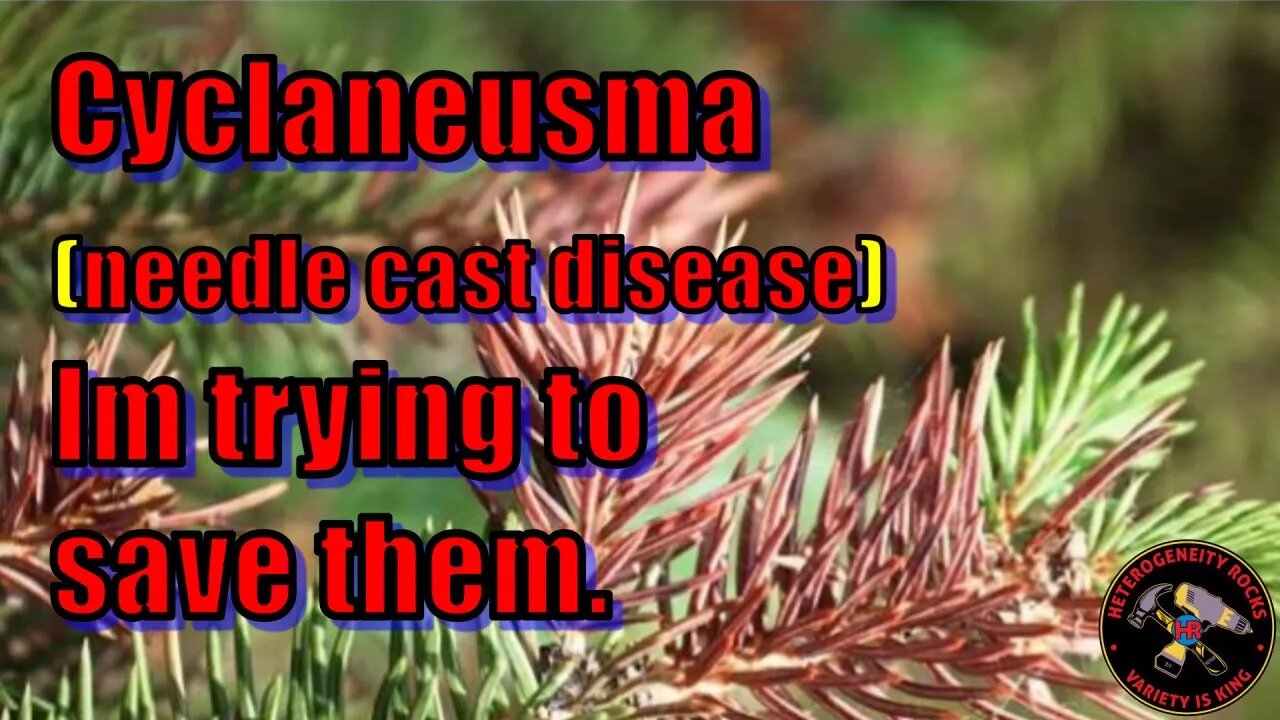Premium Only Content

Cyclaneusma needle cast disease | I'm trying to save my trees. #forest #disease
Cyclaneusma needle cast disease is very destructive too trees.In this video, we will be discussing Cyclaneusma needle cast disease, a fungal disease that affects conifers such as pine, spruce, and Douglas fir. This disease can cause significant damage to these trees, leading to defoliation and even death if left untreated.
We will start by discussing the symptoms of Cyclaneusma needle cast disease, which include yellowing and browning of needles, followed by their premature dropping. We will also talk about how this disease spreads and what conditions promote its growth.
Next, we will delve into the biology of the fungus responsible for Cyclaneusma needle cast disease, including its life cycle and how it infects trees. We will also discuss the different management options available to control this disease, including cultural practices, fungicide applications, and tree removal in severe cases.
Throughout the video, we will provide visual aids such as photos and diagrams to help viewers understand the disease and its effects on conifers. We will also provide tips on how to prevent and manage Cyclaneusma needle cast disease, as well as resources for further reading.
Whether you're a homeowner, landscaper, or forestry professional, this video will provide valuable information on how to identify, prevent, and manage Cyclaneusma needle cast disease in your trees.
This disease is the most common and most destructive needle cast in fir. It severely defoliates seedlings and young trees, reduces their growth, and may sometimes kill them. In larger trees, however, the damage does not cause any serious problems. The current year's needles are infected first, but they do not show any damage. The following spring, brown spots appear and spread, eventually covering the entire surface of the needles by mid-summer. The first fruiting bodies form on the upper surface of the needles and discharge spores in late summer or early fall. It is unclear just what role these spores play, but they may give rise to the second type of spores. Ascospores form in mid-summer on the needles infected two years earlier. Hysterothecia, the fruiting bodies bearing these spores, create a black line on the underside of the needles. This line is actually the ascus, which will release ascospores able to infect new shoots the following spring. Taken from
-
 53:12
53:12
Glenn Greenwald
7 hours agoImprisoned For Journalism: Jeremy Loffredo On His Detention In Israel, Censorship & More | SYSTEM UPDATE #368
85.9K71 -
 51:42
51:42
Man in America
9 hours agoTrump, Elon, CBDCs, Digital Prison & the Great Taking w/ James Patrick
30.7K9 -
 LIVE
LIVE
I_Came_With_Fire_Podcast
8 hours agoSPECIAL LIVE FIRE (w/ Aaron Praeger)
2,582 watching -
 49:18
49:18
PMG
23 hours ago $1.48 earned"Biden Regime Trying to Trigger WW III Before Trump Term Begins, and Ballots Still Being Counted?"
28.4K2 -
 1:24:27
1:24:27
Flyover Conservatives
14 hours agoWhile Trump Claimed Victory, Guess What They Were Doing Behind the Scenes... - Mel K | FOC Show
35.8K2 -
 1:33:53
1:33:53
Adam Does Movies
8 hours ago $2.62 earnedIs Dwayne Johnson A Bankable Star Anymore? + TONS Of New Movie Trailers - LIVE!
27.4K4 -
 3:00:44
3:00:44
Tate Speech by Andrew Tate
17 hours agoEMERGENCY MEETING EPISODE 91 - CASE DISMISSED
380K325 -
 2:22:54
2:22:54
WeAreChange
7 hours agoLiberal Media COLLAPSING! Begging For Forgiveness!
81.4K39 -
 17:25
17:25
TimcastIRL
15 hours agoDOJ, FBI Officials Are LAWYERING UP, FEARING Prosecutions From Matt Gaetz & Trump
76.8K163 -
 58:58
58:58
The StoneZONE with Roger Stone
8 hours agoAmerica’s Political Realignment – Democrat Gov. Rod Blagojevich Joins The StoneZONE w/ Roger Stone
45K6